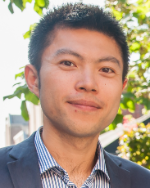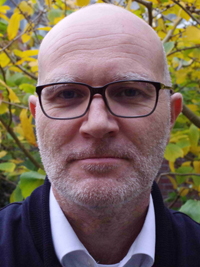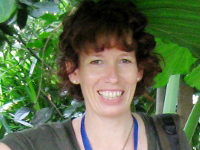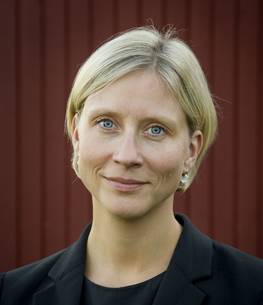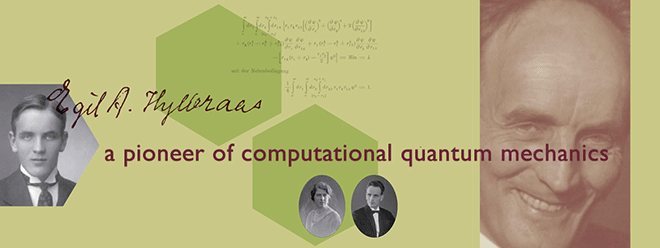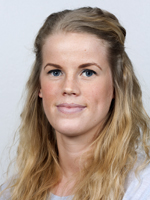Previous events - Page 197
Master of Science Chengxin Zhao at Department of Physics will be defending the thesis
“A radiation tolerance study of the ALICE TPC Readout Control Unit 2”
for the degree of PhD
This Thursday, at the Speciation Journal Club, we will discuss a paper on Speciation by genome duplication by Vallejo-Marin et al. published in 2015 in Evolution.
Doctoral candidate Chengxin Zhao at Department of Physics will give a trial lecture on the given topic:
"Machine/Deep Learning and Neural Nets — Important techniques valuable for analysis of LHC experiments"
Mauro Valli, INFN Rome
Weekly Theory Seminar, and also part of the seminar series of the Strategic Dark Matter Initiative.
Welcome to our GEOHYD Lunch Seminar Wednesday 29th November @ 12:15 in Aud 1, The Geology building. The seminar is helt by Amy Oen from Norwegian Geotechnical Institute.
”Impact of temperature, food availability and life-history stages on the eDNA emission from Pacifastacus leniusculus and its obligate parasite Aphanomyces astaci”
Elisabeth Lundsør (PhDstudent AQUA)
Translation from research to value creation can not be done without understanding immaterial property and how to protect it. How can we ensure that we capture and exploit ideas? How can we develop collaboration between academia and business? We invite researchers and small and medium sized enterprises (SMEs) to an educational day on IPR!
By Prof. Bruce M.S. Campbell, Emeritus Professor of Medieval Economic History at The Queen's University of Belfast, Northern Ireland
Andreas Carlson og Jean Rabault
Nature has invented ingenious aerodynamic design solutions, some of which are critical for plants as wind dispersal of seeds and fruits is coupled to their flight performance. This formulates into an optimization problem for plants: large seed wings can lead to increased lift and more efficient dispersion, but are costly for the tree to build and can more easily be trapped in the canopy. Double winged seeds/fruits separate from their tree when a specific level of dessication is reached, and autorotate as they descend to the ground. This leads to the question: how is the wing curvature of seeds/fruits linked to their flight performance? To answer this, we develop a theoretical model that suggests the existence of an optimal wing curvature that yields maximal lift. To further understand the interplay between the flow and the wing geometry, we perform a synthetic seed adaptation by deploying 3D printing of double winged fruits that we use in flight experiments, where we span the phase space of aerial dynamics by changing the of wing curvature and seed/fruit weight. Experiments confirm that there is a sweet-spot in curvature to maximise the flight time consisted with geometrical measurements from a wide range of seeds in Nature. Our results highlights the importance of not curving too much or too little for helicopter fruits to have an optimal flight performance.
Martin Sahlén, University of Uppsala
This Friday, November 24th, we're discussing a paper by Uyeda et al. (2017): "A General Model for Estimating Macroevolutionary Landscapes".
Hope to see you there!
Elisabeth Seland
In my job as research adviser, I receive a lot of questions about rights, possibilities and problems in connection with scientific publishing and open access. Both EU and the Norwegian Research Council have rules about this, and there is also a UiO policy in place that is relevant for all employees. I will give a short presentation to try to clear up what you have to, must, may, could and should related to Open access. In my experience many of you have the same questions about these issues, so I hope you bring your questions with you and we can address them in the seminar.
by
Stephan Sobolev
From GFZ, Potsdam and University of Potsdam
I will discuss the differential structure in the mod 2 Adams spectral sequence for tmf, leading to its E_\infty-term. These calculations were known to Hopkins-Mahowald; in their current guise they are part of joint work with Bruner.
Jan Heisig, RWTH Aachen
The origin and nature of the dark matter in the Universe is one of the most pressing questions in fundamental physics. The combination of particle physics and cosmology has proven to be a successful avenue leading to the well-established theory of big bang nucleosynthesis that explains the primordial abundances of light elements. In the similar manner an extrapolation to even earlier times in the Universe has led to the WIMP (Weakly Interacting Massive Particle) freeze-out paradigm - one of the best motivated explanations of the dark matter relic abundance measured today. However, despite an enormous experimental effort no conclusive hint for WIMPs has been found, putting pressure on the WIMP dark matter explanation. In this talk we examine new avenues beyond the standard WIMP picture. We show that scrutinizing the well-known co-annihilation scenario and dropping the commonly made assumption of chemical equilibrium between co-annihilating partners offers new phenomenological possibilities. By solving the full coupled set of Boltzmann equations we find solutions that accommodate the measured dark matter density while requiring very small couplings that are in accordance with current null-results in WIMP searches. [continued below]
(The slides will be available here)
Guest lecture by Professor Dr. Christian Zidorn, Department of Pharmaceutical Biology, Christian-Albrechts-Universität (CAU) Kiel, Germany.
Guest lecture by Professor Dr. Birgit Classen, Department of Pharmaceutical Biology, Christian-Albrechts-Universität (CAU) Kiel, Germany.
Inhibering av reseptor tyrosin kinase AXL i melanoma celler ved bruk av BGB324
Late Lunch Talk by Arthur Porto, CEES, University of Oslo
Siri Fjellheim from Norwegian University of Life Sciences (NMBU), will give the talk entitled "Life at high latitudes: the adaptive basis for successful diversification of the grass subfamily Pooideae to temperate regions"
by Indrė Žliobaitė, University of Helsinki, Finland
Magnetically induced current densities of electronic excited states at the MCSCF level
In this talk, I will present recent results about magnetically induced currents for low-lying electronic states at the MCSCF level of theory. Based on the strength of current-density susceptibility, we will discuss (anti)aromaticity of the electronic states.
Siv.Ing Karoline Gangestad Primdahl ved Farmasøytisk institutt vil forsvare sin avhandling for graden ph.d: Stereoselective Synthesis of Oxygenated Polyunsaturated Fatty Acid Mediators and Ivestigation of Biosynthetic Pathways.
Welcome to our GEOHYD Lunch Seminar Friday 17th November @ 12:15 in Aud 1, The Geology building. The seminar is helt by Dr Joel Fiddes visiting from Switzerland.
